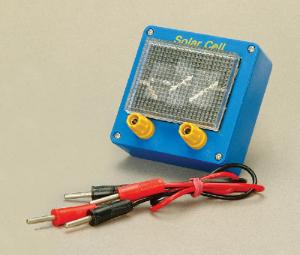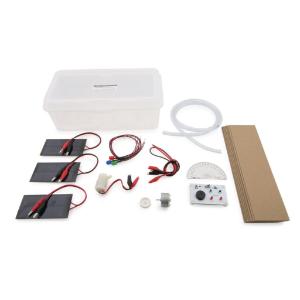Shedding Light on Solar Cells; Plus, a free handout from AccessScience
Access to this content is available to Ward’s World readers for free from McGraw Hill’s AccessScience, an award-winning, digital STEM resource that provides immediate, authoritative answers to students’ thirst for scientific knowledge on topics such as climate change, virology, pollution, and more. Ward’s World and McGraw Hill have partnered to offer educators a no-obligation, free trial subscription to this product. Request your free trial today and discover how valuable AccessScience can be for you and your students.
High School
Solar energy concepts will have the students in your class walking on sunshine. From scientific exploration to sustainable development, solar energy brings the heat. Students will be fascinated to learn about the solar devices that have revolutionized how we harness and utilize solar energy. By incorporating concepts about solar cells into your lesson plan, students gain a better understanding of renewable energy sources, environmental responsibility, and innovative thinking about the world around them.
Understanding Solar Cells:
Solar cells, aka photovoltaic cells or PV cells, are electronic devices that convert sunlight directly into electricity through the photovoltaic effect (generation of voltage and electric current in a material upon exposure to light). PV cells are the building blocks of solar panels and are essential in harnessing solar energy for various applications (e.g., cars, calculators, water heaters). Solar cells are typically made of semiconductor materials, most commonly silicon, which can generate an electric current when exposed to light.
Real-world Solar Cell Applications:
Introduce your students to real-world examples of solar cells being used to make a difference. Students may enjoy tracking solar communities in NY, MA, MN, and others that have embraced solar energy as a means of sustainability and discussing the economic and environmental benefits and challenges. By showcasing practical applications, we can bridge the gap between theory and real-life impact, making the concepts more engaging and relevant to students.
Shed Light on Solar Cell Facts:
After you flip the switch on students’ curiosity about solar cell science, there are some lesser-known facts they may find enlightening about this remarkable technology; here are just a few:
- Solar Cells in Space: Solar cells have played a vital role in powering satellites, probes, and even the International Space Station. Operating in space allows solar cells to function more efficiently without the interference of Earth's atmosphere, ensuring uninterrupted power generation.
- Unexpected Solar Cell Applications: Solar cells have found their way into unexpected places beyond traditional solar panels. They are now integrated into portable electronics like backpacks with built-in solar panels for charging devices on the go. Some creative examples include solar-powered wristwatches and even solar-powered fashion accessories like handbags, sunglasses, and Bluetooth headsets, with more being invented every day.
- Solar Cell Transparency: Scientists are working on transparent solar cells that can be seamlessly integrated into windows, screens, and other surfaces.1 These see-through solar cells utilize specialized materials that allow light to pass through while simultaneously capturing solar energy, opening new possibilities for energy generation.
- Solar Cells Inspired by Nature: Scientists draw inspiration from nature's biological solar panels to improve solar cell technology. By studying photosynthesis in plants, they aim to replicate the highly efficient light absorption and energy conversion processes found in nature's solar powerhouses.2
- Solar Cells as Art: Solar cells have crossed into the realm of art and design. Artists and architects now incorporate solar cells into their creations, such as solar-powered sculptures and buildings with integrated solar panels. For example, “Sonic Bloom” is a solar sculpture at the Pacific Science Center in Seattle. Even The White House has gone solar under presidents Carter, G.W. Bush, and Obama.
The sky’s the limit for the scientific inquiry you can inspire in students with solar cell concepts! Students can develop critical thinking skills and a deeper understanding of the scientific concepts using hands-on activities, data analysis, and classroom discussions. Encourage them to explore questions like: How does the efficiency of solar cells vary with different materials? How can we maximize energy output from solar panels?
Download McGraw Hill’s AccessScience article, Solar Cell, covering the photovoltaic effect, energy conversion, and applications. The free download also includes assessment questions and answers you can use to test student understanding.
1. World Economic Forum: This technology turns windows into solar panels; here’s how.
2. MSU: College of Natural Science; Plant Research Laboratory
Recommended Products
[StartProductBlock]

Solar Cells
Show how direct/indirect sunlight provides power. Encapsulated mini panels can be used individually, in a series, or parallel for desired output.
[EndProductBlock]
[StartProductBlock]

Solar Cell Unit
This solar cell can run a small propeller and comes mounted on a mini motor. Demonstrates solar energy conversion into mechanical energy.
[EndProductBlock]
[StartProductBlock]

Solar Energy Exploration Kit
Students discover how photovoltaic panel angles relative to the sun affect power output with this innovative kit.
[EndProductBlock]
